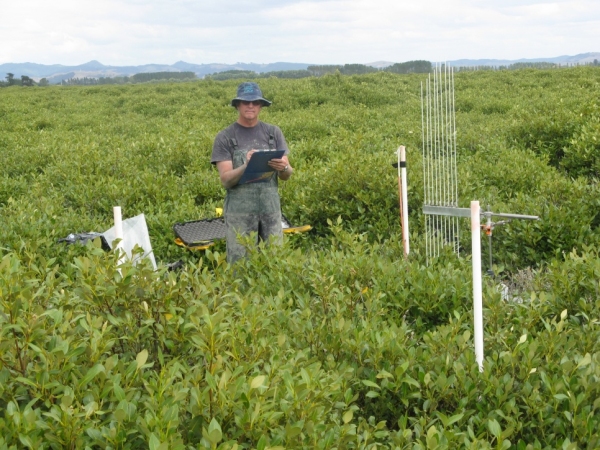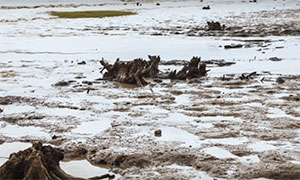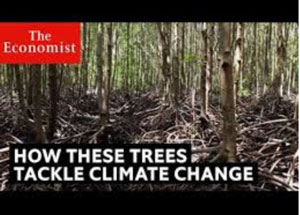|
The MAP News
497th Edition June 20, 2020 |
|
|
FEATURE Marvellous Mangroves for French Guyana - The Mangrove Alliance French Guyana - Merveilleuses Mangroves de Guyane, the French version of Marvellous Mangroves, adapted and translated for use in French Guyana, has just been published. The joint project between the Mangrove Action Project (MAP), Cayman Islands-based Mangrove Education Project (MEP) and Kote Foret was started in early 2018 when MAP education director and MEP executive director Martin Keeley and Kote Foret’s director Lucille Dudoignon began the process by reviewing the Dutch version from the country’s Suriname neighbour. Mr. Keeley travelled to French Guyana in 2018 as well as the following year, and in the fall of 2019 ran a three day pilot workshop with Ms. Dudoignon at the College Schoelchner school in Kourou on the coast. The workshop was supported by teachers Audrey Gardan and Remy Catel and combined their classes for several of the activities as well as the field trip held on the third day to the mangroves at Pointe de Roches in Kourou. “The pilot went extremely well,” says Mr. Keeley. “My French is a bit rough, but Lucille took over and with her teaching skills the kids participated enthusiastically in both the activities and the field trip. We had spent several days prior to the pilot reviewing the materials and their application. It takes a long while to put together a Marvellous Mangroves program in a new country, and while the ecosystem in French Guyana is essentially the same as that of Surinameen there are some differences in the flora and fauna, the translation needs to be accurate. Social styles can also be different and this can affect classroom implementation.” READ MORE GLOBAL Love mangroves? Share your pictures with the world  GLOBAL - Once again, as a celebration of International Mangrove Day on July 26, they are raising awareness of the importance of mangrove forests with a global photography contest. Following on from World Environment Day on June 5, and to celebrate the bold commitments being made across the world for a sustainable future, the theme for this year’s contest is #ForNature. We invite you to send us your best photos for a chance to be part of a special exhibition that will help highlight the beauty and importance of these undervalued coastal ecosystems. Photos will be viewed and judged by an expert panel, including photographer Cristina Mittermeier, and there will be special prizes this year for our three chosen winners. Wherever you live in the world and whether you are an amateur or professional, beginner or expert, young or old, this contest is for you. Your images have the power to inspire people and to help raise the profile of mangroves. Deadline for entries is Friday, July 24, 2020. READ MORE Addressing Climate Change Vulnerability of Coastal Cities Through Mangrove Forests 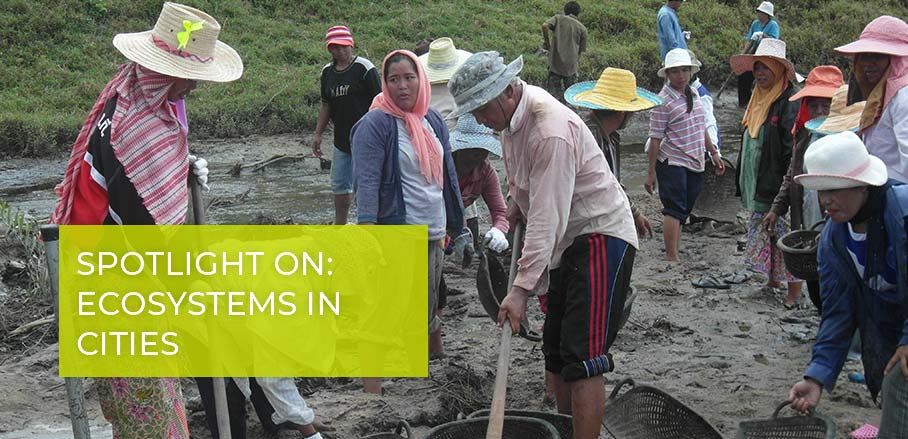 GLOBAL - Around the world, coastal cities are threatened by storms, rising sea levels, and other climate change related hazards. With conventional approaches often both costly and ineffective, nature-based solutions are offering valuable alternatives. One example are the community-based methods developed by the NGO Mangrove Action Project. The climate crisis is real and measurable. Sea levels are rising, storms and droughts are intensifying at an alarming rate. A recent study warns that major coastal cities such as Mumbai, Shanghai, Jakarta, and Bangkok could be lost to rising sea levels over the next 30 years, affecting an estimated 300 million people living along the world’s coasts. This is about three times the number of people affected than previously estimated. “The figure could double to 630 million people affected by 2100 if little is done to rein in greenhouse gas emissions. These assessments show the potential of climate change to reshape cities, economies, coastlines and entire global regions within our lifetimes,” says Scott Kulp, lead author of the study. READ MORE Mangrove Trees - Nature's Hurricane Barriers - Could Be Gone By 2050 Due To Sea Level Rise 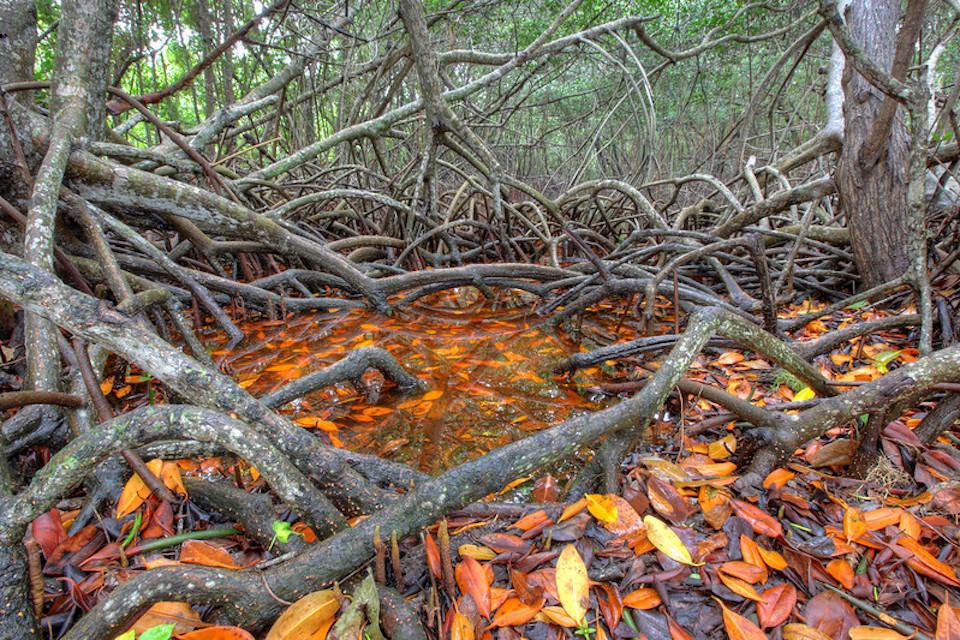 GLOBAL - Mangrove trees serve as nature's hurricane barriers for places such as Everglades National Park, Biscayne National Park, Virgin Islands National Park, and Big Cypress National Preserve. Plus, they provide valuable habitat for fish and other marine life, and are pretty cool for humans who are fortunate enough to paddle through them. But they could be gone by 2050, victims of sea level rise driven by climate change. Scientists studying sediment data from the last 10,000 years are estimating that current projections for sea level rise will doom mangroves if they come true. When sea level rise rates exceeded 6 millimeters per year, similar to estimates under high-emissions scenarios for 2050, the scientists found that mangroves were very likely to stop keeping pace with the rising water levels. Mangroves are more likely to survive when sea-level rise is less than 5 millimeters (about 0.2 inches) per year, which is projected for low-emissions scenarios this century, the study published in the journal Science said. READ MORE AFRICA A Photo Essay Celebrating Africa’s Precious Biodiversity  CONGO - The food we eat, the air we breathe, the water we drink and the climate that makes our planet habitable all come from nature. During these exceptional times, nature is sending us a message: to care for ourselves, we must care for nature. It’s time to wake up. To take notice. To raise our voices. It’s time to build back better for people and the planet. Africa is immensely rich in biodiversity. Its living organisms comprise around a quarter of global biodiversity and it supports the Earth’s largest intact assemblages of large mammals, which roam freely in many countries. Africa’s biomes extend from mangroves to deserts, from Mediterranean to tropical forests, from temperate to sub-tropical and montane grasslands and savannas, and even to ice-capped mountains. In celebration of World Environment Day, we are pleased to share with you some of Africa’s unique Biodiversity. READ MORE Madagascar’s communities, an engine for change MADAGASCAR - Local entrepreneurship drives wildlife conservation and food security. “My daughters and I, we don’t always get to eat enough,” says Nirina, a resident of the Malagasy village of Marovovonana. “There’s no supermarket here, so we mostly eat what we grow ourselves or find in the forest.” She is hopeful that the training she has been receiving in poultry rearing will improve her family’s diet and reduce the pressure on her to go hunting. Nestled in sumptuous vegetation, Marovovonana is among Madagascar’s remotest settlements. On the edge of Makira Nature Park, it sits next to one of the country’s largest tracts of virgin forest. The spot is exceptionally rich in biodiversity and a habitat for lemurs, an animal found nowhere else in the world. Conserving this unique fauna matters crucially in a community heavily dependent on fishing and hunting for its food and income. But poverty, isolation and a shortage of domestic meat have forced the inhabitants of Marovovonana and neighbouring villages to hunt down species that are endemic, endangered or at risk of extinction. In a rapidly changing world, Nirina – much like the other 90 000 people living on the edge of the nature park – struggles to make ends meet. The wildlife around her is thinning out and flooding is increasingly frequent. READ MORE AMERICA In Guatemala, Communities Take Best Care of the Forest  GUATEMALA - When the government of Guatemala created the Maya Biosphere Reserve in 1990 to protect Central America’s largest rainforest, conservationists felt betrayed that a big chunk was given to local communities for sustainable logging. They saw it as a lost chance to save the heart of the third most important biodiversity hotspot on the planet, home to more than 1,400 plant and 450 animal species, including jaguars, pumas, tapirs, spider monkeys, alligators, harpy eagles, and macaws. Today many think differently. Illegal cattle ranches — most of them linked to major drug cartels — have been wrecking the national parks containing the protected forests in the west of the reserve, causing some of the fastest rates of deforestation in the world. Almost a third of the forests in the largest park in the reserve, the 835,000-acre Laguna del Tigre National Park, has been lost since 2000. But the once-maligned community forests are still intact, a shining beacon of conservation covering nearly 900,000 acres of the eastern half of the reserve. Deforestation rates there are a fraction of 1 percent. Together, they comprise one of the world’s largest and most successful community forest experiments. READ MORE ASIA Japanese coal developers to push three new coal power stations in Bangladesh 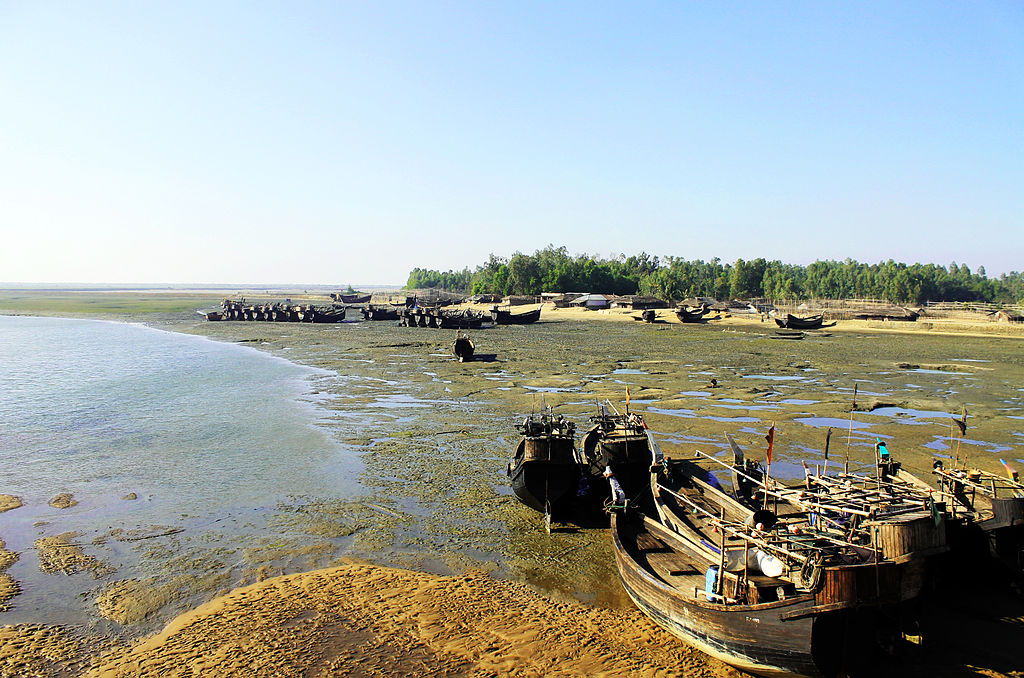 BANGLADESH - Japanese companies are planning to build at least three new coal power plants on the small coastal island of Matarbari in Bangladesh, one of the most climate vulnerable countries in the world. If built, these three climate-wrecking coal-power stations alone would produce an estimated 506 million tonnes of carbon dioxide throughout the plants’ operational lifetimes. If global temperatures continue to rise, the impacts of climate change would be felt more strongly by Bangladesh than most other countries. We can’t let Japanese financial institutions and coal power developers: JICA, Sumitomo, NEXI and SMBC threaten our future and the future of communities in Bangladesh. We need your support. Please re-tweet and share the posts on Twitter and Facebook. Take action now and stop the build-out of coal plants in Bangladesh. LAST WORD Rest in peace, Rainforest Rescue founder Reinhard Behrend  Dear friends of the rainforests, We have sad news to share with you today: Reinhard Behrend, the founder of Rainforest Rescue (Rettet den Regenwald e.V.), passed away on June 5, 2020, after a long battle with cancer. Fascinated by the beauty and diversity of the natural world, Reinhard built a worldwide network to defend it. With Rainforest Rescue's campaigns, he helped sensitize the public to the issues of environmental crime and social injustice. While he knew that rainforest destruction is a juggernaut that cannot be halted easily, he never let up in his determination to stand up for the rights of rainforest dwellers and protect biodiversity. His life's work: saving the rainforest Reinhard's desire for us to reconnect to nature was at the heart of his struggle. As a child in postwar Hamburg, he was fascinated by the teeming life in the allotment gardens on the outskirts of the city. As a young man, his curiosity and drive to explore drew him to the rainforests of Southeast Asia and Central America. These unique ecosystems and the threats they face left such a deep impression on him that he made saving the world's rainforests his life's work. Influenced by the anti-nuclear and peace movements, he began working in the mid-1980s to raise German mainstream society's awareness of its responsibility for the destruction of the rainforest. Never one to think small, he and his comrades-in-arms took on none other than the Coca-Cola Company in their very first protest against citrus plantations. And with success – the activists attracted considerable media attention by occupying Coca-Cola's Hamburg bottling plant, prompting the global corporation to announce that it was canceling its plantation plans. With his information campaigns, Reinhard reached more and more people, keeping up the pressure on policymakers and bureaucrats. At the same time, he supported grassroots groups in the global South in their fight against rainforest destruction, knowing that putting donations to work strengthening local activists on the ground would have the greatest impact. As much as he savored Rainforest Rescue's successes, he knew that the power of corporations and ever-increasing consumerism would further quicken the pace of destruction. Encouraging us to fundamentally rethink our behavior was therefore always at the core of his message, making him a role model for many of his fellow activists. As his health declined, he stepped down as chairman and passed the torch to the current Rainforest Rescue co-chairs, fellow founder Dr. Bettina Behrend and the Indonesia expert Marianne Klute, in May 2020. In an interview marking the 25th anniversary of the organization, Reinhard described how he always hoped for an outcry in our midst. For him, protest could never be loud enough. As friends of the rainforest, to whom he has given a platform with Rainforest Rescue, we will continue to raise our voices loud and clear, even if we are silent today. Yours faithfully, Dr. Bettina Behrend Marianne Klute Rainforest Rescue (Rettet den Regenwald e.V.) |
INTERVIEW – Yale Climate Connection interview with MAP's Alfredo Quarto LISTEN
|
|
Mangrove Action Project Click here to view past newsletters
|
|
Search News Archive
Saturday, June 20, 2020
MAP News Issue #497 - June 20, 2020
Saturday, June 6, 2020
MAP News Issue #496 - June 6, 2020
|
The MAP News
496th Edition June 6, 2020 |
|
|
FEATURE Cayman Islands Protect Mangroves  CAYMAN ISLANDS - After more than 20 years of legal action Cayman Islands’ mangroves finally have official legal protection, which should, finally, prevent these dwindling yet critically important species from being removed by developers without consequence. The protection was finalized through the adoption of a Species Conservation Plan. Cayman and international environmental organizations, including the Mangrove Action Project (MAP) have warned about the dangers of mangrove clearance for years. Since urban and tourism developments started accelerating in the early 1980s, Cayman has lost over 25% of its mangroves. With no specific penalty in place, the courts have the discretion to fine perpetrators up to half a million dollars or send them to jail for as long as four years, which is the maximum penalty for conservation law infractions. Meanwhile, Protect Our Future, a group of young people in the Cayman Islands who campaign for conservation and environmental awareness, are not letting the current lockdown stop their efforts and are using social media to campaign hard for the Caribbean-wide initiative to plant trees, including mangroves. READ MORE GLOBAL Fragmentation and connection of mangroves and wetlands around the world  GLOBAL - Two new papers led by the Global Wetlands Project (GLOW) highlight some of the challenges facing mangroves around the world. 1. In "Global trends in mangrove forest fragmentation" , published in Scientific Reports, fragmentation of mangrove habitats was mapped at a global scale. The findings show that fragmentation of habitats into patches may be a better indicator for some ecological functions than area. Additionally, this study found that many areas with high rates of mangrove loss, like south-east Asia, also have high rates of fragmentation. 2. "Integrating Outcomes of IUCN red list of ecosystems assessments for connected coastal wetlands", published in Ecological Indicators, studied a coastal wetlands region in Queensland, Australia. This region was used as a model to understand how several different ecosystems (seagrass, mangrove, and saltmarsh) are connected and rely on each other for services and long-term success. READ MORE Mangrove Photography Contest  GLOBAL - The Mangrove Action Project has just launched its 6th World Mangrove Day Photography Awards! The contest is now open and runs through the 24th of July, just in time for Mangrove Day on the 26th. Select photos will be added to a special exhibition and an expert panel will be judging entries. There will also be special prizes this year for three chosen winners. Wherever you live in the world and whether you are an amateur or professional, beginner or expert, young or old, this contest is for you! Your images have the power to inspire people and to help raise the profile of mangroves. READ MORE AFRICA A Holistic Training Approach for Tanzania's Mangroves TANZANIA - Save our Mangroves Now! and the Mangrove Action Project are working to improve mangrove restoration efforts. In Kenya, a 2018 scoping workshop of mangrove best practice gaps in the Western Indian Ocean region highlighted the important fact that many field-based forestry officials receive limited training on mangroves within their forestry college curriculums. Their most recent training took place in Tanzania, where planting efforts were seeing high rates of failure, so the two organizations worked together on holistic community-based ecological mangrove restoration (CBEMR) trainings for both government agencies and civil society. There is interest in future trainings of this nature, including targeting government decision makers. Save Our Mangroves Now!, in its second funding cycle, is dedicated to increasing national and regional policy advocacy for mangroves in the Western Indian Ocean region. READ MORE AMERICA Group helps turn abandoned shrimp farms into carbon-storing mangrove ecosystems 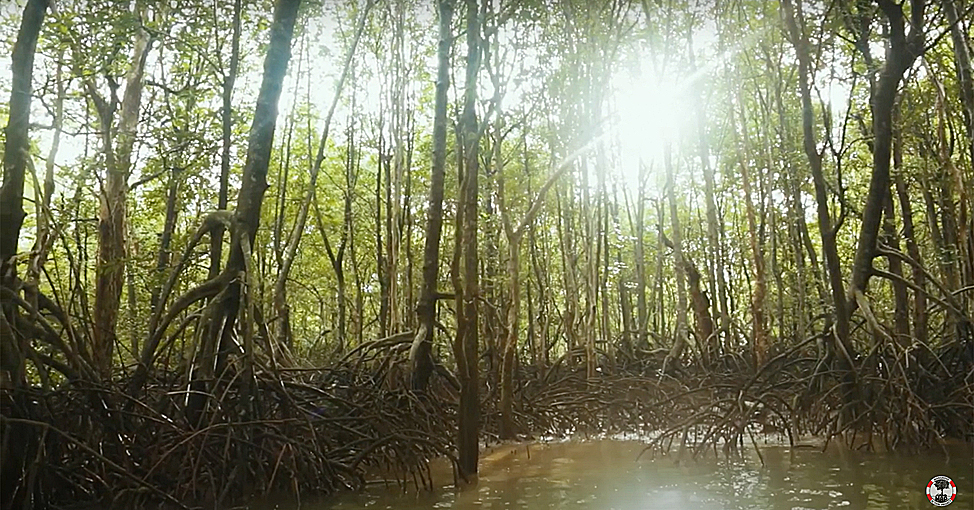 USA - Along many tropical shorelines, swampy mangrove forests create habitat for fish and buffer the impact of heavy waves. “Mangroves reduce the effects of climate change, protecting coastlines against erosion and rising sea levels and hurricanes or storm surge events,” says Alfredo Quarto, cofounder of the Mangrove Action Project. He says mangrove forests also store a huge amount of carbon, so they help slow global warming. But around the world, mangrove forests have been cut down for development and agriculture. For example, in Thailand, vast areas were destroyed to make room for shrimp farms. Many of those farms have since been abandoned. So Quarto’s group is helping turn those shrimp ponds back into ecosystems where mangroves can thrive. He says the work requires more than planting seeds. For example, the group works with local communities to repair and reconnect waterways, which helps mangroves regenerate on their own. READ MORE Mass Extinctions Are Accelerating, Scientists Report  USA - We are in the midst of a mass extinction, many scientists have warned — this one driven not by a catastrophic natural event, but by humans. The unnatural loss of biodiversity is accelerating, and if it continues, the planet will lose vast ecosystems and the necessities they provide, including fresh water, pollination, and pest and disease control. Recently, there was more bad news: We are racing faster and closer toward the point of collapse than scientists previously thought, according to research published in the Proceedings of the National Academy of Sciences. The extinction rate among terrestrial vertebrate species is significantly higher than prior estimates, and the critical window for preventing mass losses will close much sooner than formerly assumed — in 10 to 15 years. “We’re eroding the capabilities of the planet to maintain human life and life in general,” said Gerardo Ceballos, an ecologist at the National Autonomous University of Mexico and lead author of the new study. The current rate of extinctions vastly exceeds those that would occur naturally, Ceballos and his colleagues found. Scientists know of 543 species lost over the last 100 years, a tally that would normally take 10,000 years to accrue. “In other words, every year over the last century we lost the same number of species typically lost in 100 years,” Ceballos said. READ MORE ASIA Nature's wrath ruins mangrove plantation, leaves city more vulnerable to cyclones INDIA - Experts will urge the state government to impose tax on the people of Kolkata to save the mangrove plantation in Sunderbans for safety and security of the city during heavy cyclone. There has been constant onslaught on the mangrove plantation since 2009 when Aila had devastated the area. Subsequently two cyclones Bulbul and Phani had also affected the trees. Cyclone Amphan which had hit the 48 islands where Mangrove trees grow exclusively caused extensive damage to the island. Not only, the mangrove trees, thousands of trees that have been uprooted in 54 islands function as a shield that protect Kolkata from the ill effects of cyclone or super cyclone. A mangrove tree takes 5 to 7 years to grow.Experts said due to the felling of thousands of trees, Kolkata has become vulnerable to cyclones and super cyclones. It may be recalled that in 1737, the cyclone which had hit the city claimed 30,000 lives and most of the mud houses were razed to the ground. The experts maintained that the frequency of cyclones in Bay of Bengal has gone up due to loss of biodiversity and global warming. If the tree barriers become weak, the wind will hit Kolkata directly. They maintained had the mangrove trees not been there in Sunderbans, the cyclone Amphan would have hit the city with windspeed anything between 180km per hour and 190 km per hour instead of 135 km per hour and 140 km per hour with which it had hit Kolkata. READ MORE Black Day For Sundarbans: How Cyclone Amphan Has Left India's Heritage Mangrove Forest In Ruins  INDIA - The Sundarbans is a cluster of low-lying islands in the Bay of Bengal, spread across India and Bangladesh, famous for its unique mangrove forests. But sadly, nothing is left anymore, ever since cyclone Amphan made its way to Bengal. Trees have fallen, lands have become barren and crops have also been destroyed. Apparently, the storm bought so much salt water spray from the sea that it even killed the trees it that survived its speed. That's not all though. Even wildlife has been affected with the devastating affects of the cyclone as Sundarbans is known as a UNESCO world heritage site for rare and endangered species. For those who don't know, the Sundarban forest reserve is home to 96 protected tigers and all their lives have been put in danger. READ MORE Watch | Sundarbans mangrove forests face existential threat 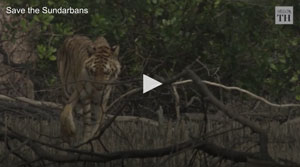 INDIA - A video on the world's largest mangrove forest and the importance of conserving it The Sundarbans is a cluster of low-lying islands in the Bay of Bengal, spread across the coast of India and Bangladesh.It holds the world's largest mangrove forest with an area of about 10,000 sq km of which 60% is in Bangladesh and the rest in India. The mangroves of Sundarbans provide sustainable livelihoods to millions of people and functions as a protective barrier for its inhabitants from natural calamities. WATCH VIDEO LAST WORD Dear Mr. Alfred Quarto, International Development Director, Mangrove Action Project. Dear Sir, I am very much thankful to you for your kind concern to take up the issue of protection of Mangroves in Kakinada city of Andhra Pradesh state in India as part of your global mission of Mangrove Action Project. World over the human greed is taken over their consciousness towards the protection of environment, India is not an exception to it. In a way Covid-19 tried has tried to put us in the right perspective. It's time for all environment consciousness people join together to protect natural resources on our planet. I request the global Mangrove Protection fraternity to help us in protecting the Mangroves in India as part of your MAP. Bolisetty Satyanarayana Environment Conservationist +919849152757 bolisettisatyanarayana@gmail.com READ THE LETTER |
INTERVIEW – Yale Climate Connection interview with MAP's Alfredo Quarto LISTEN
|
|
Mangrove Action Project Click here to view past newsletters
|
|
-
The community of adults and youth in Cayman Islands has come together recently to release a series of educational videos. Each is geared to...
-
By Alfredo Quarto, Program & Policy Director Co-founder, MAP There is a rather urgent situation concerning the bio-invasion of the Son...
-
By: Isabel Robinson, MAP Volunteer Intern Some months ago I decided to come to Thailand and do an internship in mangrove conservation, ...
MAP News Issue #597 - May 04, 2024
Sediments and mangroves NEW ZEALAND - The rapid expansion of mangrove forests in NZ estuaries over the last several decades has resulted ...
